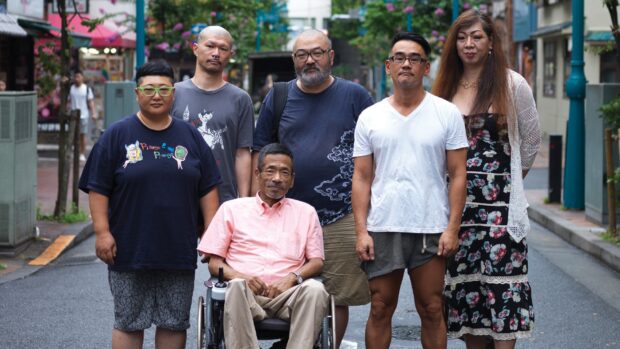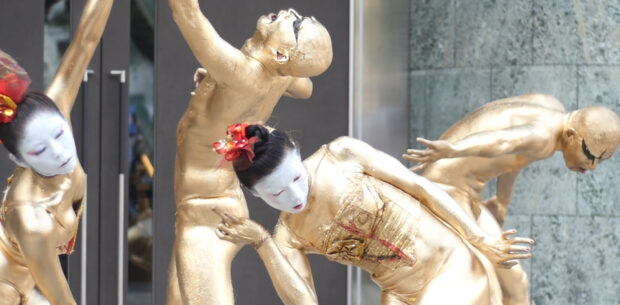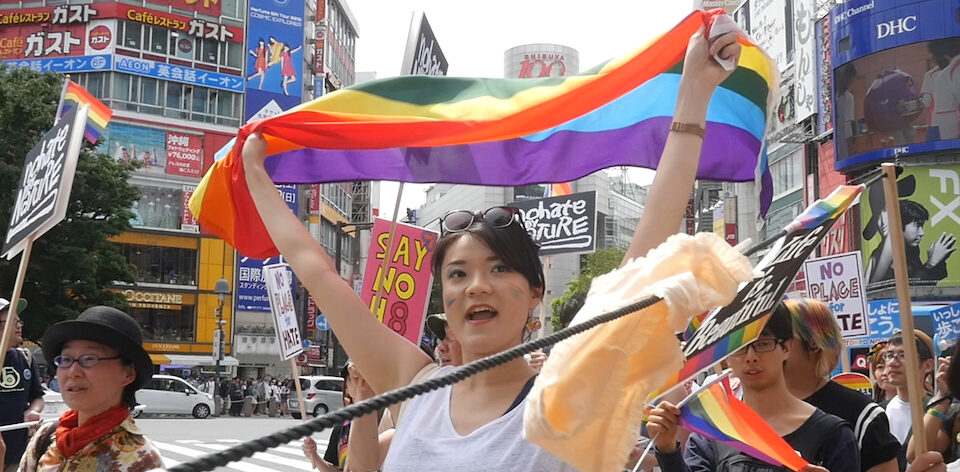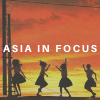Japan has one of the more complex and arguably misunderstood relationships with its LGBTQI+ community. Canadian writer, fashion designer and filmmaker Graham Kolbeins explored this in the course of editing several books on gay erotic manga.
What he discovered from his interviews was that Japan was “in the middle of an LGBT boom.” Yes, there is still some way to go when it comes to recognition of same-sex couples and anti-discrimination laws. Yet QUEER JAPAN posits that Japan isn’t culturally homophobic so much as it is slow to change traditions.
Kolbeins doesn’t explore these issues with any depth, instead taking a broad brushstroke approach via a series of character studies. There’s always the danger with a project like this that it will be a goggle box of outsiders looking in, an all too common thread in western films about Japan. Thankfully, this fairly comprehensive look at LGBT representation and life in Japan is an incredibly detailed and empathetic examination of the spectrum.

“Maybe it’s a kind of theatre,” says Japanese drag queen and artist Vivienne Sato, “but the starting line is much further back.” Yet if Sato’s recognition of how far the culture has to go, Kolbeins’ 100 interviews conducted over three years ensures that her comments are not presented in a vacuum. Prominent voices like Akira the Hustler, non-binary performance artist Saeborg, and manga artists Hiroshi Hasegawa and Gengoroh Tagame (G-Men) appear alongside Aya Kamikawa, first openly transgender elected official in Japan. There’s also video game designers, performance artists, bar owners, academics and YouTubers.
Kolbeins also takes the time to explore the politics of various scenes, from the women-only party that’s been running at Bar Goldfinger since 1991 through to broader ‘gay quarter’ of Tokyo in Shinkuku Ni-Chome and associated Pride March. There’s a completely exploitation-free exploration of various fetish scenes too, albeit peppered by some cheeky and deliberately provocative interviewees. “This world just exists in tangent,” comments Margarette, the organizer of the Department H fetish club. Through the compilation of their intersecting perspectives, Kolbeins’ message is clear: the LGBTQI+ culture in Japan is as diverse and deep as the global culture. It’s also growing.

From a technical point of view, it’s a slick affair. Starting with bright neon titles that flicker between romanji and hiragana/katakna, Kolbeins and co-photographer John Roney ensure that the visuals are as interesting as their subject matter. Their camera never flinches away from explicit imagery either, making this a refreshingly frank exploration of sex and sexuality that contrasts with Japan’s perceived conservatism.
By the end, there’s a feeling that we have a thorough understanding of this group of people – and that seems to be the main point. “In the midst of all this attention,” laments one subject, “Japanese people aren’t ready to move on yet.” Hopefully this excellent document brings mainstream Japan one step closer to understanding that this culture is part of their tradition as well.
2019 | US, Japan | DIRECTOR: Graham Kolbeins | WRITER: Anne Ishii, Graham Kolbeins | CAST: Nogi Sumiko, Atsushi Matsuda, Hiroshi Hasegawa, Gengoroh Tagame, Akira the Hustler, and Tomato Hatakeno | DISTRIBUTOR: Altered Innocence | RUNNING TIME: 99 minutes | RELEASE DATE: 11 December 2020 (Online)






